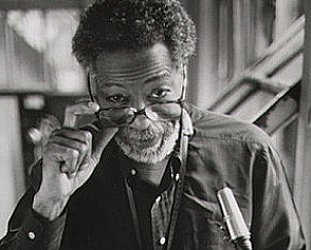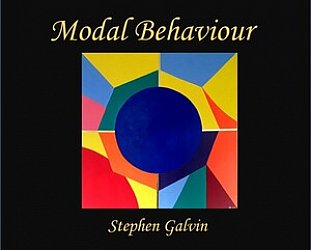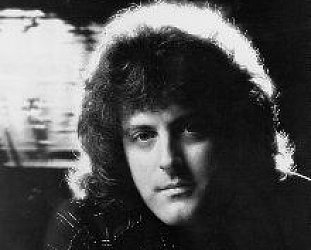Graham Reid | | 7 min read

When trumpeter Miles Davis turned 60 in 1986 the New York weekly Village Voice marked the occasion with a lavish 28-page supplement of essays and critical opinion.
By way of introduction the editor, Gary Giddins, wrote words which seemed admirably bare and understated: “For four decades Davis has been in the forefront of American music – as a trendsetter and as a lightning rod for controversy. There have been years when the records he made, the clothes he wore, the posture he adopted were much discussed and imitated as his music.
“Most of his records are continuously in print and he is the subject of at least six books. What’s more, he seems to be on the verge of new things.”
In that speculative last sentence Giddins was more prescient than he might have thought. After five years of silence ending in 1980 – when he had withdrawn into the drug addition which claimed him in his early years – Davis had re-emerged with a series of increasingly volatile, if still erratic, albums and concerts.
Davis’ career has always been identified by his wayward talents. He was a figurehead among the brilliant, archetypal jazz groups of the 40s and 50s alongside figures like Charlie Parker, Dizzy Gillespie and Thelonious Monk. He was at the cutting edge with classic jazz albums like Birth of the Cool (1949) and Kind of Blue a decade later.
He re-invented himself in the 60s in legendary groups with musicians much younger than himself, then embraced the rock sounds of Jimi Hendrix to almost single-handedly create a fusion of jazz and rock in the early 70s which spawned innumerable second-rate imitators.
But by ’75 Davis had lost his touch – some also said his technique – and withdrew from performance.
In 1980 he came back, although it was noticeable the writers chosen to write about Davis for the Voice supplement chose to focus on his work in the 60s.
In ’84 he also received the Sonning Music Award in Denmark for a lifetime of achievement in music. He was the first jazz musician and the first black artist to be so honoured and it placed him in the elevated company of previous winners from Aaron Copeland, Isaac Stern and Leonard Bernstein – all classical musicians.
But more important in ’86 Davis released Tutu, his best album for as long as anyone cared to recall.
He was now verifiably “back.” He was touring again and not only was Tutu great music but it did what Davis always claimed for himself: it reached young people.
In the past Davis had felt that his street-funk jazz of the early 70s had connected with the militant black revolutionary mood of the times. On The Corner from 72, for example, featured songs entitled Mr Freedom X and the self-aggrandising Vote For Miles.
But they had not connected as much as Davis believed or wanted. Tutu did.
It was played on black radio stations and white dance floors. It was heard by smart boutiques and over the sound system before concerts by Suzanne Vega and David Bowie.
And when he toured widely – he came to Auckland in ’88 – he proved that even though he was in his sixties this was one old bebopper who was still relevant: still “The Prince of Darkness,” as he was titled everywhere.
Davis always had that dark mystique. He mostly kept to himself and was considered aloof, arrogant and rude. His opinions about music and art (by the 80s he was selling his paintings) and white attitudes were spat out with particular venom.
Along the way the Miles Davis musician became Miles Davis superstar, one of an inner sanctum which included his friends Prince, Quincy Jones, Jimi Hendrix and Charlie Parker. A very exclusive black club.
But Davis was just plain scary for most people. Those who interviewed him noted, almost without exception, their trepidation beforehand and sheer relief at having survived his aggressive company. Davis didn’t suffer anybody gladly.
Now all that his changed because Davis, has spoken at length about himself in a free-wheeling account in collaboration with the invisible hand of Quincy Troupe.
It is titled with typical Davis directness, Miles: The Autobiography. And “spoken” is the correct word to describe the chronological but slightly rambling style.
Like Willie Nelson’s recent I Didn’t Come Here and I Ain’t Leaving and The Real Frank Zappa Book, Davis’ book is all tape transcription and therefore digressive.
Get Davis telling you about the decline of 52nd Street – the home of jazz in New York during the 40s – and the digression proves as interesting as the idea he started with: “One place was the Royal Roost owned by a guy named Ralph Watkins. It was originally a chicken joint but in 1948 Monte Kay talked Ralph into letting Symphony Sid produce a concert there.
“Monte Kay was a young white guy who was hanging around the jazz scene. Back then he used to pass himself off as a light-skinned black guy. But when he got some money he went back to being white. He’s made millions producing black musicians. Today he’s a millionaire living in Beverley Hills.”
This style of autobiography with its looseness uninhibited opinion and fractured chronology is fascinating. At its best it offers a sense of the person and their pace. Davis’ sentences become more compressed the language more vitriolic as ideas overtake him.
His most notable feature is the myth-making with which he surrounds himself and in which he undoubtedly believes.
Davis likes to be respected – he felt he was in New Zealand, he says in passing – if not treated royally. And Davis talks tough.
Listen to him deal to the father of Frances Taylor when he asked if Davis intends marrying his daughter: “I liked her father; he was a very nice man. But I knew how he was and we talked man to man. I knew he was concerned about his daughter because that’s the kind of person he was, so I said: ‘It’s none of your business, Maceo. Frances don’t mind, so what you got to do with it, man? We all grown, you know!’”
This is typical Davis. A blunt fellow all round. He recounts a recent meeting with Barbara Bush in which he didn’t kiss her hand as he had just done with Nancy Reagan (“she seemed like a warm person”). When Davis’ then-wife, actress Cicely Tyson, challenged him he says: “I told her I thought she was George’s mother. Cicely looked at me like she thought I was crazy. But I don’t know those people, don’t keep up with them, and they don’t know me either.”
True enough – so why not say it?
And like Mel Torme in his It Wasn’t All Velvet autobiography Davis used his book to settle a few old scores with former wives for their greed and stupidity. Some don’t even seem to appreciate what a catch they had in Davis.
Having had so many wives and women (“bitches” is a word which appears among the idiomatic street language from time to time) allows Davis to assess the various merits of women of different cultures.
“The finest women in the word for me are Brazilian, Ethiopian and Japanese women. And here I mean a combination of beauty, femininity and intelligence, the way they carry themselves their body carriage and the respect they have for a man. Most American women don’t know how to treat a man.”
Davis likes intelligent, independent women – but deferential.
This then is the personality of Davis which emerges in the pages. He carries grudges, is vain (“my face is in good shape and I haven’t had a facelift either”), seldom misses an opportunity to disparage “whites” who have hijacked jazz, the Grammy Awards or whatever, and is extraordinarily candid about his drug addiction.
It is a fascinating and readable book simply because of who is doing the talking – and swearing. Critic Leonard Feather made it his duty to count 358 appearances of a particularly offensive word.
And laced though all this is the story of the man who had changed the direction of popular music three, perhaps four items. Typically, Davis says “five or six” times.
He was born Miles Dewey Davis III, the son of an upper middle-class dentist in Illinois about 40km north of St Louis. He speaks lovingly of his mother – “a beautiful woman who had a whole lot of style” – but the family separated early on.
But the time Davis got to study at the Julliard School of Music in New York, ostensibly on classical trumpet, he had played in jazz groups, married and was a father, and just wanted to get to New York to find the saxophonist Charlie Parker.
This then was the young Davis who arrived in New York in 1944 (“not 1945 like a lot of jive writers say...”)
He was cocky, precocious, dressed in the finest Brooks Brothers suits and desperate to make his way in jazz alongside the older, heroin-addicted genius Parker.
Davis’ autobiography is, of course, fascinating when the talks about the musicians he has encountered in the past five decades. He can be blunt (“Ornette Coleman is a jealous kind of dude, man”) but generous in his praise for those he likes.
He offers telling insights into characters like Parker, Dizzy Gillespie and others who shaped jazz. But mostly it reveals Davis himself.
“I had a policy with the group that they couldn’t bring their girlfriends on tour because I felt it distracted them. But I brought my girlfriends and this was beginning to cause some problems.”
When his friend and keyboard player Herbie Hancock dropped by the dressing room in 1974 to say hello, Davis “told him that he wasn’t in the band that the dressing-room was off limits to anybody who wasn’t in the band.” Davis was tetchy because his group had agreed to open for Hancock. It should have been the other way around of course.
Davis is interesting but never technical about his music. He has always said his gift for inventions is down to how he feels and hears sounds So when he speaks of his classic Birth of the Cool recordings of the late 40s (putting their “personality” into certain chords) or “finding the groove“ for his later rock-influenced music, he hardly stretches his readers. Analysis is for others. Davis just does it.
In his recent music as much as in his opinions Davis still breathes defiance. When he talks of being inducted into The Knights of Malta in 1988 it is because “I was told that I was chosen for this honour because I have class, because I’m a genius.”
Davis – who would have people believe he cares little for such honours – embraces them covetously.
Sparks fly from these pages. “America is such a racist place, so racist it’s pitiful.”
And yet he also reveals himself with a rare honesty. “I love both of them” he says of two of his profligate and troublesome children, “but my disappointment is so great, that’s about all I can say.”
In Miles: The Autobiography Davis emerges as a brusque, opinionated, petty, brilliant, erratic self-pitying old warhorse who says what he thinks without fear or favour. His answer will always be the same for those who find that too much to take.
He gives it in the first word of the book – a book about the life of a man who is, above all, a musician. “Listen.”
A shorter version of this article appeared in the New Zealand Herald in 1990 but is unavailable on the website www.nzherald.co.nz







Ay - Feb 10, 2009
Funnily enough I got this album out in the weekend and played it twice , shocked to find it is 50 years .... enlightening article Graeme. I quite like the effect of people being wary of him - no hero worshippers sycophanting might have been the part of the goal.
SaveAnd I enjoy having the opportunity to hear a live track ; heaps more to it than on the album.
post a comment